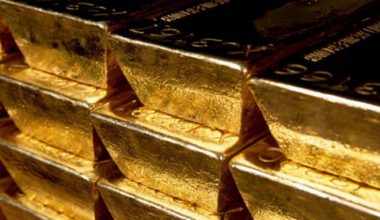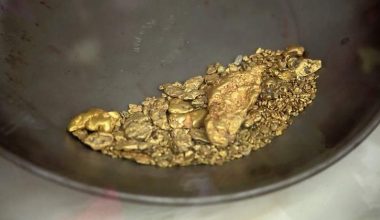Precious metals, such as gold, silver and platinum, have been considered a safe haven for investors for centuries. However, the price of these metals has experienced significant fluctuations in recent years, leading investors to question what factors affect them.
From geopolitical tensions to changes in supply and demand, there are a number of factors that can influence the price of precious metals. In this introduction, we will explore some of the key factors that affect the price of precious metals.
Inflation and its impact on gold: how to protect your investment?
Inflation is the widespread and sustained increase in the prices of goods and services in an economy. When inflation occurs, the purchasing power of money decreases, which means you need more money to buy the same goods and services as before.
Gold is considered a safe haven against inflation. This is because its value is not backed by any government or central bank, but is based on market supply and demand. Moreover, its supply is limited, making it a scarce and valuable asset.
When there is inflation, the price of gold tends to rise. This is because people seek refuge in assets that hold their value in times of economic uncertainty. Gold is one such asset.
If you are interested in protecting your gold investment against inflation, there are several steps you can take. One is to diversify your investment portfolio by investing in different types of assets, such as stocks, bonds and real estate.
Another is to invest in physical gold, such as coins and bullion. This allows you to have direct control over your investment and ensures that you are investing in a tangible and valuable asset.
In conclusion, inflation can have a significant impact on the value of gold. For this reason, it is important to consider measures to protect your gold investment against inflation, such as diversifying your investment portfolio and investing in physical gold.
In an increasingly uncertain world, gold remains an attractive investment for many investors. What steps are you taking to protect your gold investment?
Gold is consolidating its position as a safe haven in times of uncertainty and demand for it is driving up its price
In times of crisis, people seek security and protection for their finances. Gold has always been considered a safe haven, as its value is not directly related to the stock market or the economy of a particular country.
In recent years, we have seen an increase in global uncertainty, with political and social conflicts, trade tensions and economic problems in various regions of the world. As a result, the demand for gold has increased and its price has soared.
In addition, the COVID-19 pandemic has had a significant impact on the global economy, leading to increased interest in gold as a safe haven for investors.
Demand for gold has been driven by individual investors and companies, as well as by central banks that have increased their gold reserves in recent years.
In short, gold has established itself as a safe haven in times of uncertainty and its demand has been driven by economic, political and social factors.
It is interesting to note how the value of gold can be affected by different factors, and how its role as a safe haven can change in different contexts. What will be the future of gold as an investment? How will the pandemic affect its demand and price? These are important questions that only time will answer.
Discover the factors that influence the cost of metals and how their price is determined in the market
Metals are very important materials in industry and in everyday life, as they are used in the manufacture of a large number of products. For this reason, it is essential to understand the factors that influence their cost and how their price is determined in the market.
One of the most important factors influencing the cost of metals is supply and demand. If demand for a metal is high and supply is low, the price will increase. Conversely, if supply is high and demand is low, the price will decrease. Another factor to take into account is the quality of the metal, as those with a higher purity tend to have a higher price.
In addition, inflation has to be taken into account, which can affect the price of metals. If inflation is high, the price of metals will increase. On the other hand, the exchange rate can also influence the price of metals, because if the currency in which the metal is traded is devalued, the price of the metal in that currency will increase.
As to how the price of metals is determined in the market, there are different pricing mechanisms, such as the spot market, the futures market and the options market. In the spot market, the price is set on the basis of supply and demand at the present time. In the futures market, a price is set for a future date and in the options market a price is set for the option to buy or sell a metal on a certain date.
In conclusion, the cost of metals is influenced by multiple factors, such as supply and demand, metal quality, inflation and the exchange rate. In turn, the price of metals in the market is determined through different pricing mechanisms.
In an increasingly globalised and ever-changing world, it is important to be informed about the factors that influence the cost of metals, as their impact can be significant both economically and socially.
Discover the importance of precious metals in the global economy
Precious metals are a group of metals that are characterised by their rarity and high demand in industry and jewellery. The most common precious metals are gold, silver and platinum, and their market value is determined by global supply and demand.
- Gold is the most widely known and valued precious metal for its beauty and durability. It is also a popular asset for investors as a hedge against inflation and economic uncertainty.
- Silver, on the other hand, is a metal widely used in the electronics industry and in the manufacture of jewellery, cutlery and other ornamental objects. It is also used in photography and in the production of coins and ingots.
- Platinum is the most valuable and rarest of the three precious metals. It is used in the automotive industry, in jewellery and in the manufacture of medical and dental instruments.
Precious metals play a very important role in the global economy, as their value can affect different sectors and markets. For example, during an economic downturn, many investors tend to buy gold as a way to hedge against inflation and currency devaluation.
In addition, precious metals are a way to diversify an investment portfolio and reduce the risk of losses in other markets. However, it is also important to remember that precious metals are a volatile asset and their value can fluctuate significantly in the short term.
In conclusion, precious metals play an important role in the global economy and are a popular form of investment and protection against economic uncertainty. It is important to be informed about their value and their use in different industries and markets.
What do you think about the importance of precious metals in the global economy, do you think they are a safe and reliable investment, or do you prefer other financial assets? Leave your opinion in the comments.
In conclusion, precious metals have been and will continue to be an asset of great value and relevance in the financial world. Their price is subject to various factors that can affect their price, from supply and demand to the global political and economic situation.
It is important to be aware of these factors in order to make informed decisions when investing in precious metals. As always, the best recommendation is to diversify your investment portfolio.

